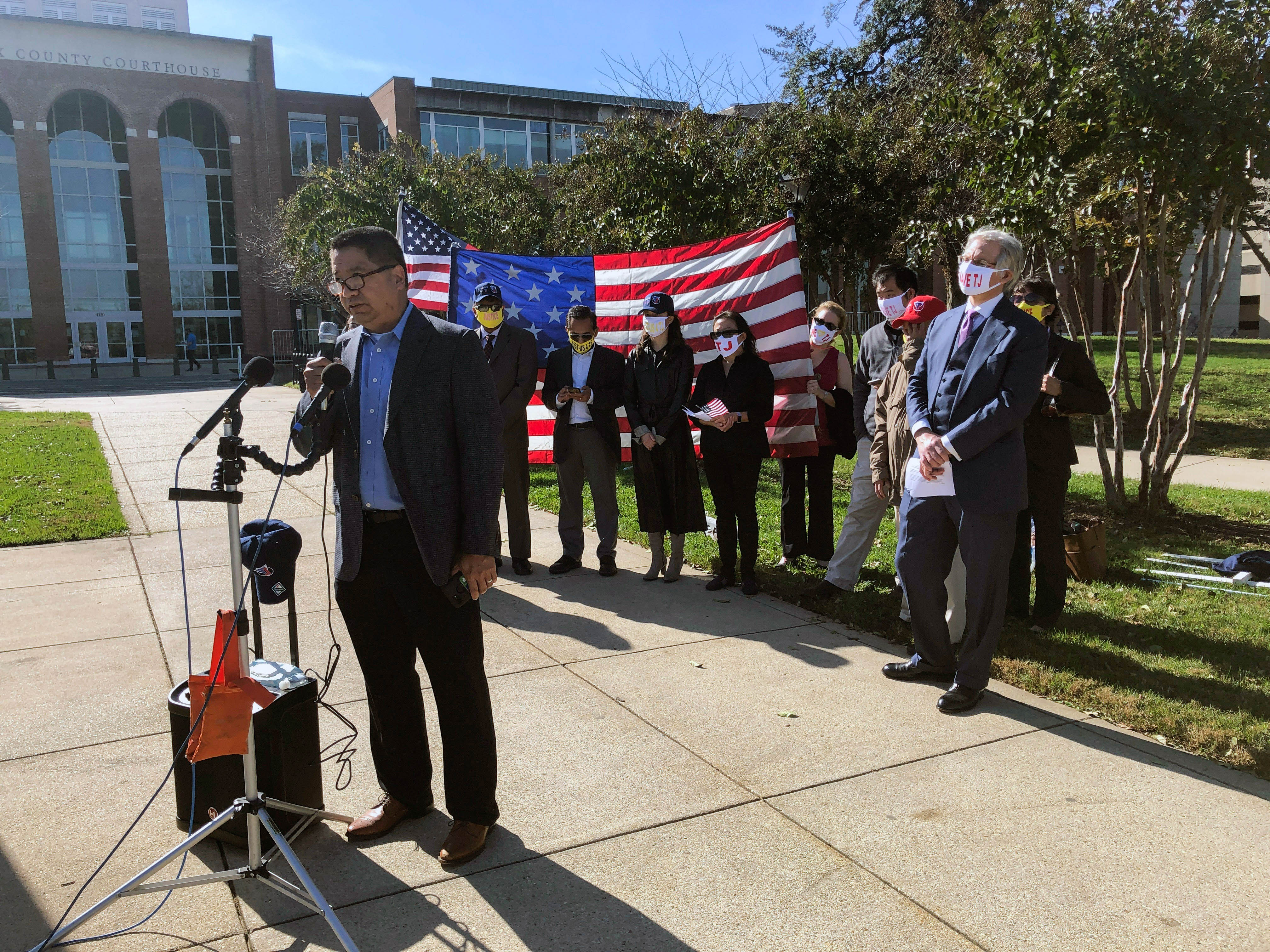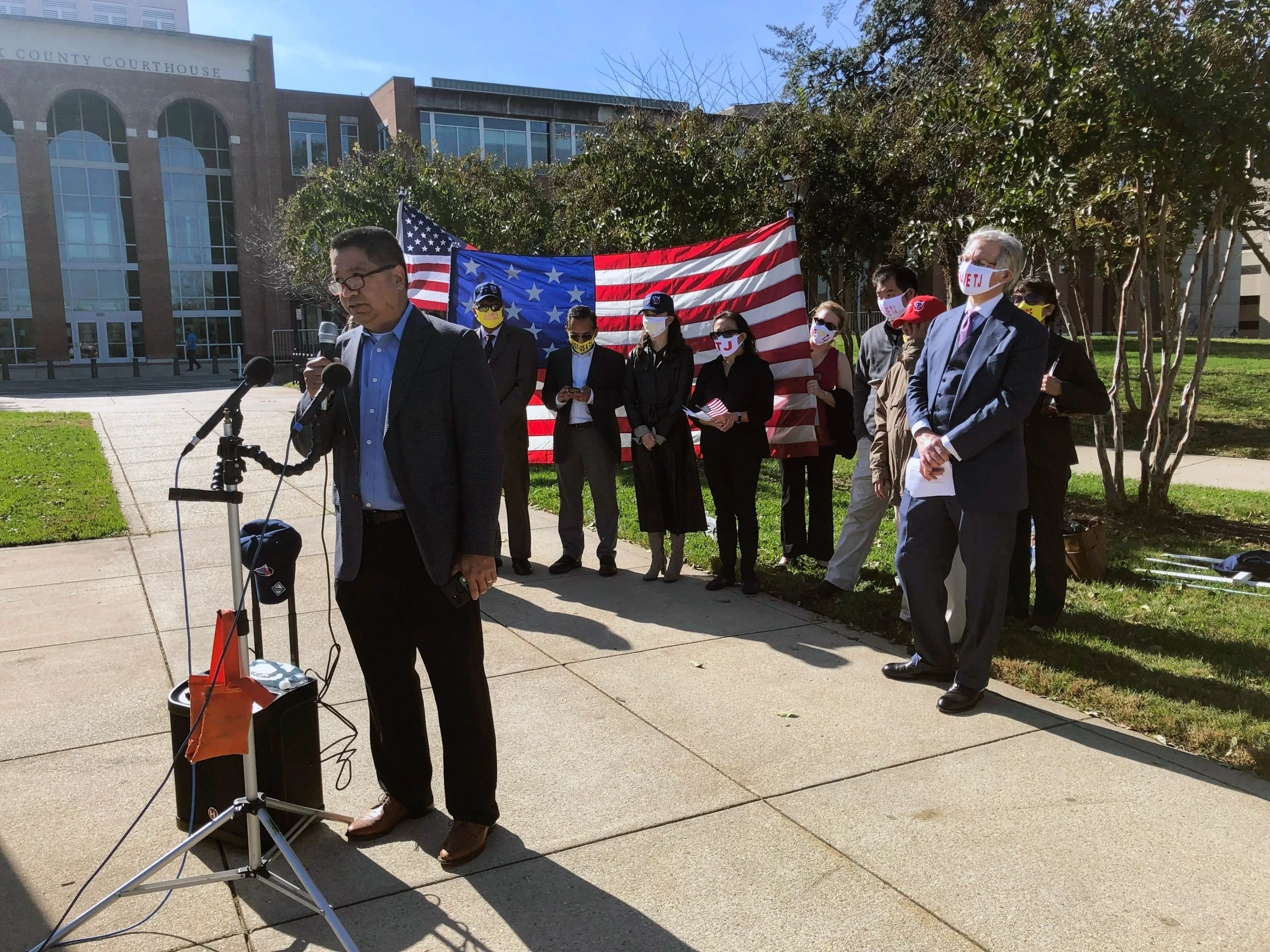
K-12 schools have long been allowed to pursue racially integrated schools through race-neutral means. But suits against schools in
New York City,
Boston and
Montgomery County, Md., are being led by the Pacific Legal Foundation, which argues that many policies are biased against Asian Americans. The case in Boston could be the Supreme Court’s next opening to restrict these practices as lawyers look to file a petition as soon as this spring. That’s in part because while the admissions process doesn’t consider race, there are still concerns about the intent of the policies and explicit statements made by some school officials that could back up their claims of discrimination.
“Schools have already been holding up the 4th Circuit’s decision in the TJ case as an example of what to do and how to make an end run around the Supreme Court. It’s kind of scary,” said Erin Wilcox, a PLF attorney who represented Coalition for TJ, the parents’ group that sued Thomas Jefferson.
Thomas Jefferson stopped requiring a $100 application fee and standardized tests for admission, and the school adopted a holistic review process that considers “experience factors” that include a student’s eligibility for free school lunch, their status as an English-language learner or attending a historically underrepresented public middle school. Admissions decision-makers also do not know an applicant’s name, race, ethnicity or sex during the process.
The changes boosted enrollment for Black and Latino students who have been historically underrepresented at the high school. But they also sparked backlash from parents who argued they were adopted to decrease Asian American student enrollment.
At least one conservative justice is watching the issue closely: Justice Samuel Alito cited the Boston case in
his dissent against the high court’s decision to turn down the Thomas Jefferson case this week. He wrote that the 4th Circuit opinion was “flagrantly wrong” and the effects of it are already being seen in cases like in Boston. Alito complained that Thomas Jefferson “has been trumpeted to potential replicators as a blueprint for evading” last year’s Students for Fair Admissions v. Harvard decision dismantling race in college admissions. And, Alito added, the reasoning behind the Thomas Jefferson case is “a virus that may spread if not promptly eliminated.”
Wilcox believes colleges will also adapt Thomas Jefferson’s methods to their admissions process as they grasp for ways to increase diversity without upsetting the courts.
“I do think we’ll see a lot of colleges and universities now following TJ’s playbook and saying, ‘Well, now that the Supreme Court said we can’t consider race at all, we’re in the same boat as these high schools. Let’s do what they did, and we’ll find a proxy for race,’” she said.
All of the high school admissions policies being challenged are considered to be race-blind — they don’t explicitly take race into consideration but aim to remedy disparities related to underrepresented students. Instead, they typically include some combination of recruiting students based on ZIP code, removing standardized testing requirements, factoring in family income or taking a top percentage of students from middle schools.
The groups suing aren’t taking issue with the policies themselves, Wilcox said. Rather, it is whether they were put in place with the intent to discriminate against students of a certain race.
The 4th Circuit found that there was “no racially disparate impact on Asian American students” in the Thomas Jefferson case. But in Boston, parents are arguing that white and Asian American students were being discriminated against because of a temporary policy that partly based admissions to competitive public high schools on applicants’ ZIP codes and family income. The 1st Circuit, which cited the 4th Circuit opinion siding with Thomas Jefferson,
ruled against the parent group because they could not prove the policy had a disparate effect on white and Asian American students.
But the parent group argues there is concrete evidence of racial bias in their case: A former school committee chairperson
made comments mocking the names of some Asian parents, and a
text message exchange between other committee members included comments critical of a predominantly white neighborhood. The district court also deemed the text messages “racist,” and found they showed that three committee members “harbored some form of racial animus.”
The school district argued that the comments did not play a role in the formation of the admissions policy.
Civil rights groups and lawyers following the legal spillover in the wake of last year’s Harvard decision dismantling race in college admissions, however, see a concerted effort to squash diversity work well beyond education.
“It’s the hope of anti-civil rights activists that there will be a bleed-over effect and that they can apply the colorblind ruling in Harvard to K-12, to employment and to so many other sectors,” said David Hinojosa, director of the Educational Opportunities Project at the Lawyers Committee for Civil Rights, a nonprofit that has defended race-conscious education policies. “The loss of affirmative action was merely a downpayment on their anti-civil rights agenda.”
Civil rights advocates felt some relief when the high court decided not to review the Thomas Jefferson case — especially since the petition came less than a year after its ruling in the Harvard case. And if the court had decided to hear the Thomas Jefferson case, it had the potential to unsettle the developing landscape of race-neutral options schools are now relying on. Those advocates are now hopeful the Supreme Court will wait to see how their Harvard opinion plays out at colleges before taking up future admissions cases.
“Schools that are already using those kinds of alternatives can see this as a bit of a reprieve,” said Sonja Starr, a University of Chicago Law professor that has been following the high school cases and studying the fallout of the Harvard decision, who is skeptical the Supreme Court will take up the pending magnet school cases.
Still, while race-neutral admissions tools have survived so far, she said, legal challenges will persist around “the reasons that they’re adopted in the first place.”
